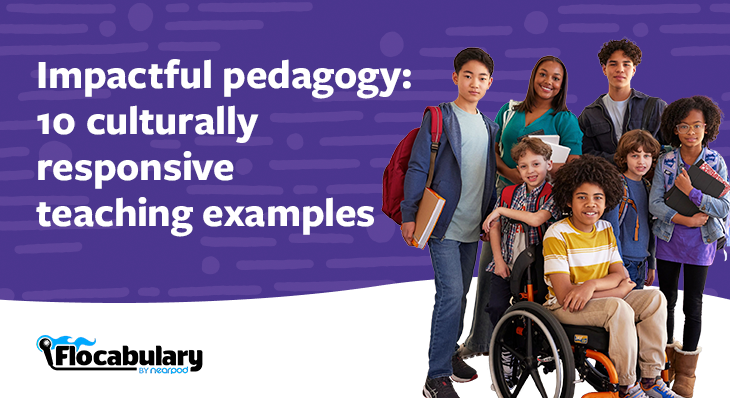
Impactful pedagogy: 10 culturally responsive teaching examples
Most won’t argue with the idea that one’s experiences in life, regardless of age and stage, affect their learning journey. This understanding is the foundation of culturally responsive pedagogy. This pedagogical approach, founded in neuroscience and psychology, takes into account the context of each individual and what they need to feel safe and supported for the vulnerability that learning entails. Culturally responsive teaching—also called culturally relevant teaching—acknowledges that tying classroom instruction to the many layers of students’ diverse cultural experiences can not only help them feel the sense of belonging and safety that are critical for learning but also accelerate their achievement and build a love of learning.
What is culturally responsive pedagogy?
In 1994, Gloria Ladson-Billings shared her culturally relevant pedagogy framework, which emphasized the idea that one’s family, upbringing, and surroundings all affect how we interact with the world. This interaction is constructed, and factors such as ethnicity, disabilities, race, economic needs, and other cultural elements should not be overlooked in the classroom.
Her research underscored three goals for those in teaching:
- A focus on learners’ academic success
- Simultaneously supporting them in developing positive cultural competence
- Helping them develop a critical consciousness to challenge social inequalities
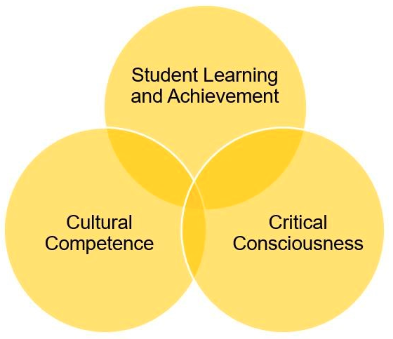
For too long, the diversity of many students’ cultural experiences and identities has been excluded from mainstream classroom settings. Culturally responsive teaching recognizes culture as an asset, and in this asset-based approach, educators can ensure that all students engage in more relevant and effective learning experiences. These inclusive strategies help students recognize “the mirrors, windows, and sliding glass doors” (Bishop, 1990) around them. That means they can see their identities and cultures reflected, learn about the identities and cultures of others, and access and enter new spaces.
What are the characteristics of culturally responsive pedagogy?
Culturally responsive pedagogy is a proactive, positive approach that supports each child’s social and emotional learning journeys in conjunction with their academic ones. For the educator, it means that they are caring and empathetic, are reflective of their own beliefs and frames of reference, and seek to learn about others’ cultures. It is worth noting that such an approach is not just a nod to acknowledging race with a holiday or thematic month. Culture includes many layers—only some of which are visible on the surface. Superficial efforts can actually make students feel more disconnected; efforts need to be authentic and woven throughout the fabric of a classroom and a teacher’s approach to teaching and learning.
In her book Culturally Responsive Teaching and the Brain, Zaretta Hammond defines culturally responsive teaching as “an educator’s ability to recognize students’ cultural displays of learning and meaning making and respond positively and constructively with teaching moves that use cultural knowledge as a scaffold to connect what the students know to new concepts and content in order to promote effective information processing. All the while, the educator understands the importance of having a social-emotional connection to the student in order to create a safe space for learning” (National Equity Project).
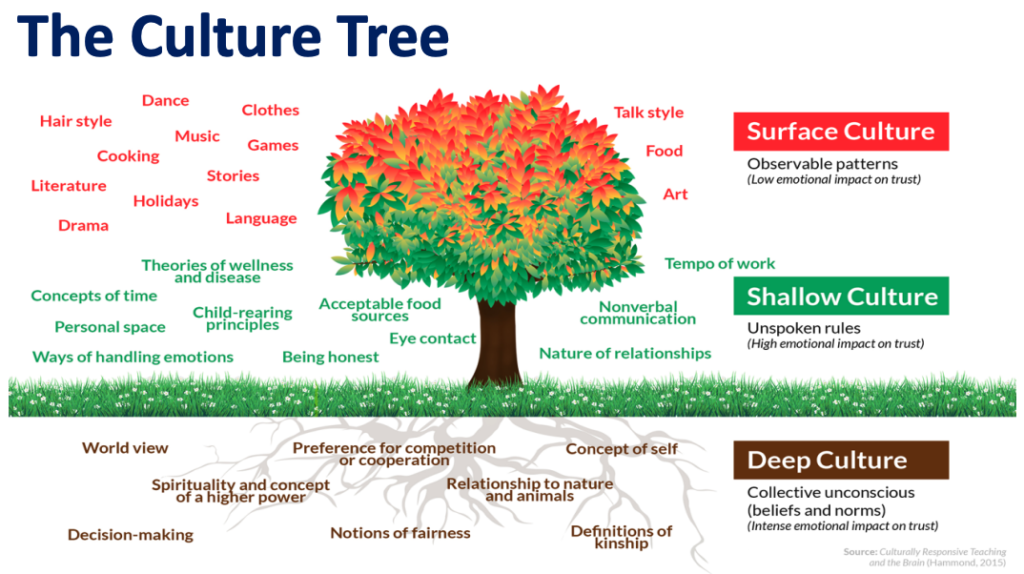
Additionally, Hammond refers to the Culture Tree, which is composed of three parts. The surface culture, or the layer represented by branches and leaves, refers to concrete and observable behavioral aspects and patterns such as food, clothing, and music. The shallow culture—the trunk—refers to the everyday interactions and social norms that are often unspoken beliefs and rules. Deep culture—the roots—is guided by values and ethics. Deep culture is accompanied by intense emotional impact, thus affecting how we learn new information. Culture provides all of us a sense of community and belonging. So when educators recognize and acknowledge students’ frames of reference, prior experiences, and cultural knowledge as a way to support or scaffold learning, the results can be exponential.
Why is culturally responsive pedagogy important?
Culturally responsive teaching is a learner-centric approach that helps affirm a student’s place in the world and supports them in developing a sense of identity and individuality. It was originally developed with a primary focus on students from historically marginalized communities, aiming to center and validate their cultural backgrounds. When students from these communities see themselves reflected positively in the curriculum, they feel a greater sense of belonging and are more likely to engage actively in their learning process (Ladson-Billings, 1995). This intrinsic motivation is key to empowering them and fostering confidence in pursuing their academic goals.
Culturally responsive pedagogy helps to forge emotional and personal connections to learning, which are vital for the brain to learn. Valuing students’ cultural identities boosts their resilience and sense of self-efficacy, leading to better academic performance and a more positive approach to learning. They become more invested in setting and reaching high expectations.
Additionally, recognizing and addressing social barriers that often disrupt education is integral to the implementation of culturally responsive pedagogy. Through this, teachers can create an inclusive learning environment where all students feel supported and empowered to overcome obstacles and achieve positive outcomes (Rodriguez, Jones, Pang, & Park, 2004).
How Flocabulary can help implement culturally responsive teaching practices
Flocabulary was created with the principles of culturally responsive teaching front of mind. Flocabulary’s video-based lessons not only accelerate learning by building academic vocabulary and comprehension, they authentically engage students by fostering personal and emotional connections through humor, music, and storytelling. The content is carefully crafted to foster inclusivity, ensuring representation that allows students to see themselves reflected while learning about diverse identities, too. Rooted in hip-hop, Flocabulary harnesses rap’s creative language to reinforce comprehension, essential vocabulary acquisition, and emotional engagement through music.
Here are some examples of the videos you can find on Flocabulary:
Keep reading to explore culturally responsive pedagogy examples that will create emotional connections and impactful learning experiences.
New to Flocabulary? Teachers can sign up for a trial to access our lesson videos and assessment activities. Administrators can get in touch with us to learn more about unlocking the full power of Flocabulary through Flocabulary Plus.
10 Impactful culturally responsive teaching examples
1. First, seek out relevant content
Representation matters, full stop. When exploring multimedia content for your students, create a mental rubric to help you evaluate how relevant and appropriate third-party content is for your students. Neuroscience shows that personal and emotional connections are vital for learning to occur, and that the brain must be emotionally ready for the vulnerability required to learn (Hammond). Share inclusive resources that showcase a range of identities and cultures so that students can see themselves in the curriculum while also learning about those who are different from them.
Flocabulary has always prioritized diversity, equity, and inclusion (DEI) in its lessons, even working with outside organizations to audit our library of content. These high-quality videos captivate students and create an impactful and memorable learning experience through hip-hop music, visual art, storytelling, humor, drama, and poetry.
Begin your Flocabulary journey by watching our Hip-Hop Fundamentals video to gain an introduction to the historical roots of hip-hop culture. Also, consider viewing our Culture video, which not only defines the concept but explains the need for cross-cultural respect. Have students complete the activities in these lessons to build their vocabulary and comprehension of these topics.
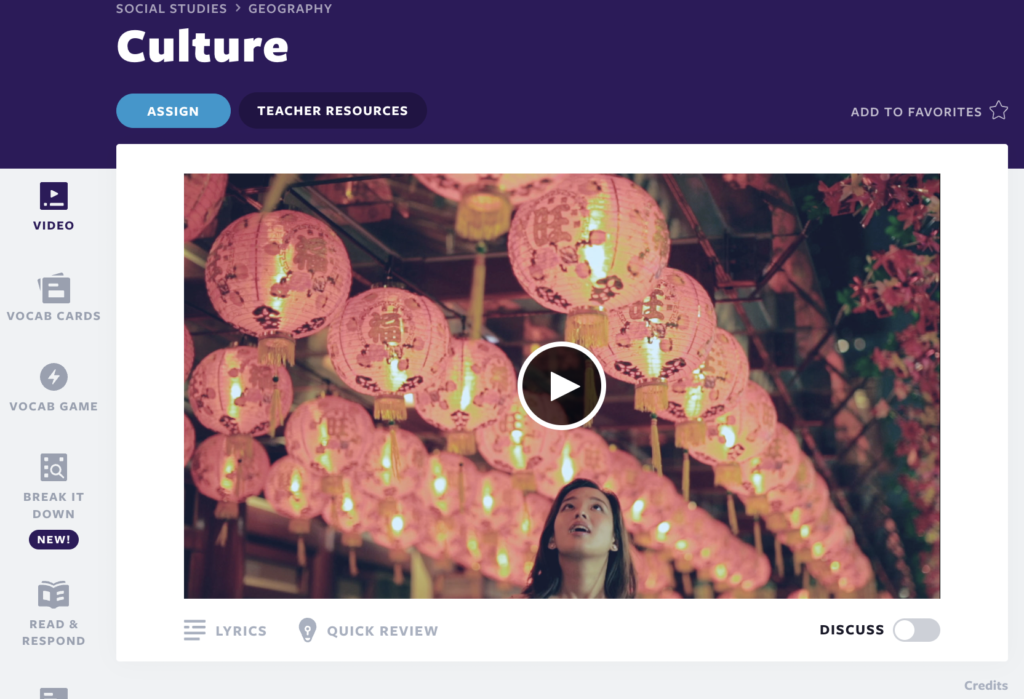
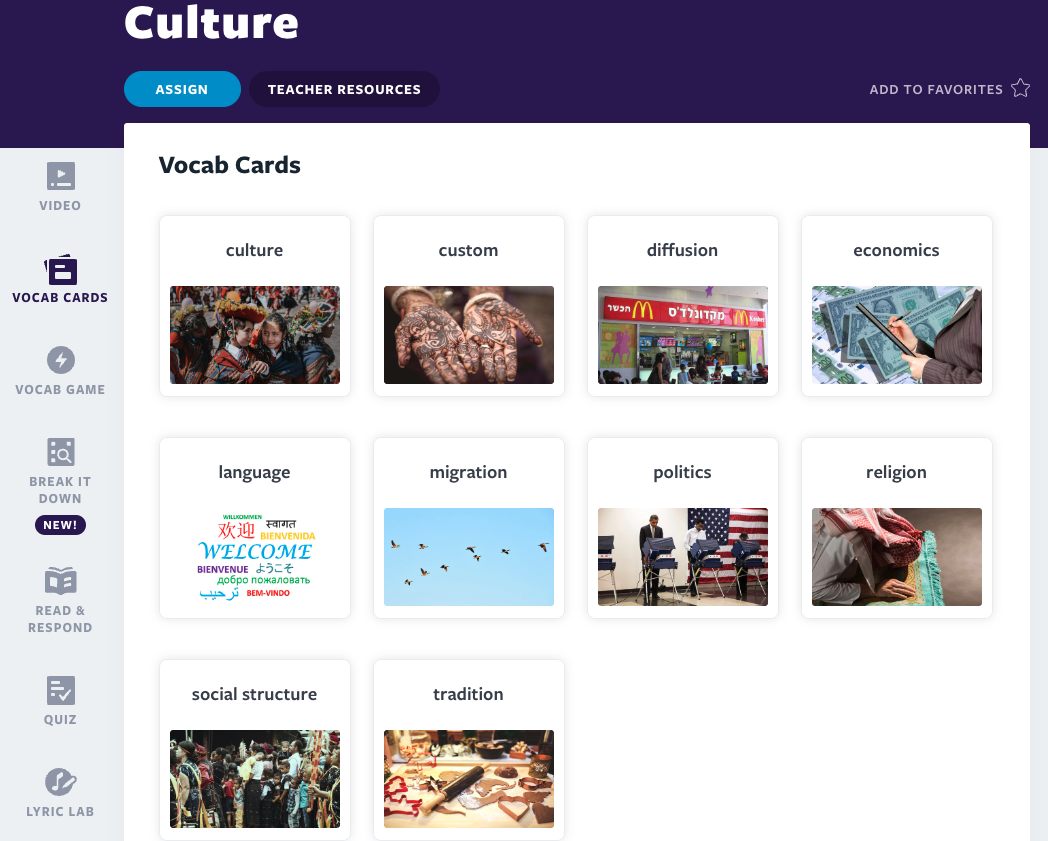
2. Build a positive classroom culture
One of the first steps in building strong relationships with your students is to create a positive classroom culture. Trust is the cornerstone of any meaningful relationship, and by both welcoming and getting to know your students meaningfully, you will create a safe classroom environment for them to push themselves out of their comfort zones in order to create ambitious goals for themselves and reach for the stars. A positive classroom culture is just one benefit of culturally responsive teaching. Help build that caring and respectful foundation by aligning on common expectations, especially when it comes to Effective Communication, having a Growth Mindset, and showing mutual Respect.
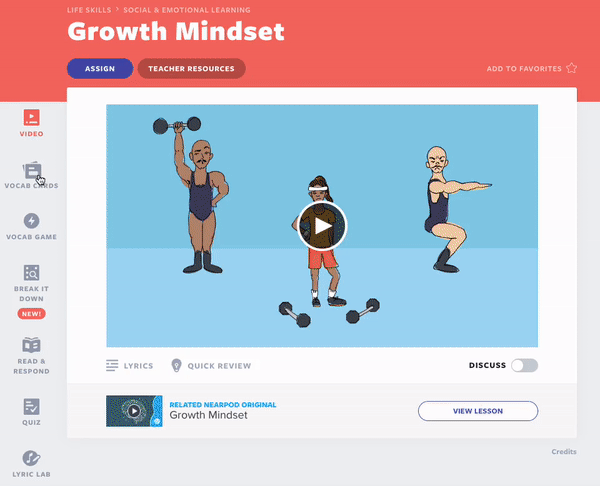
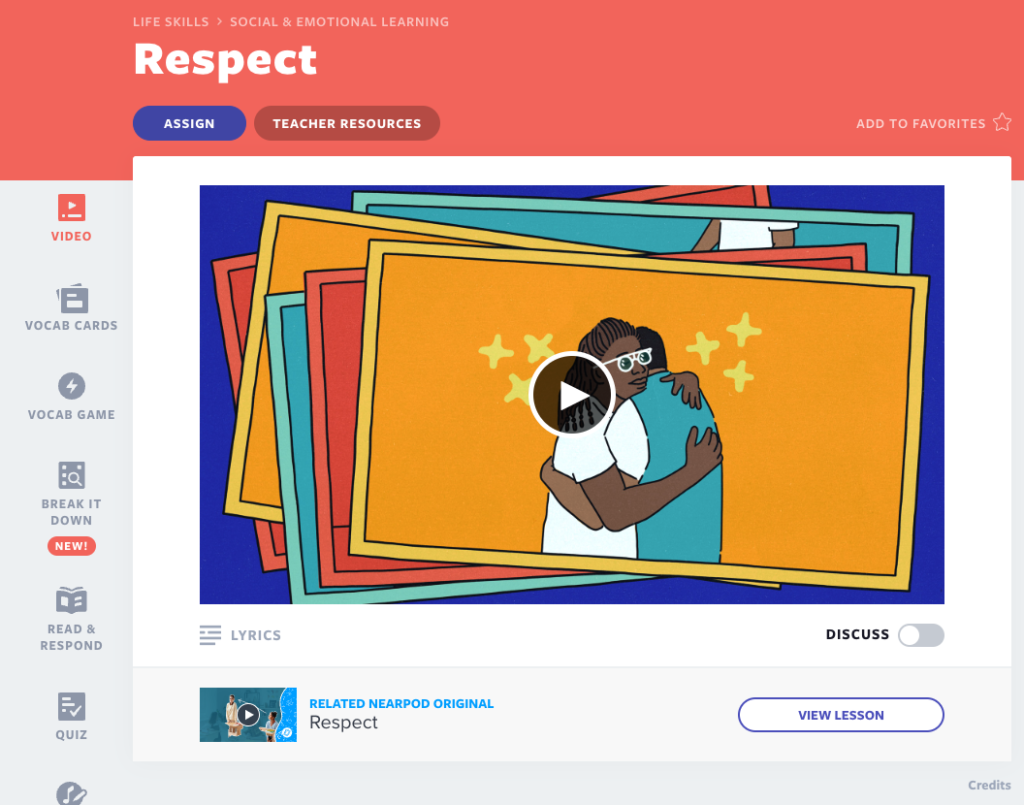
3. Share current events
It’s not surprising that our students crave real-world applicability when it comes to learning. Teaching with current events helps students relate skills to the real world, making connections that are meaningful, relevant, and authentic to their daily lives. Facilitate discussions that acknowledge and validate diverse perspectives, thereby promoting critical thinking and empowering students to become informed global citizens.
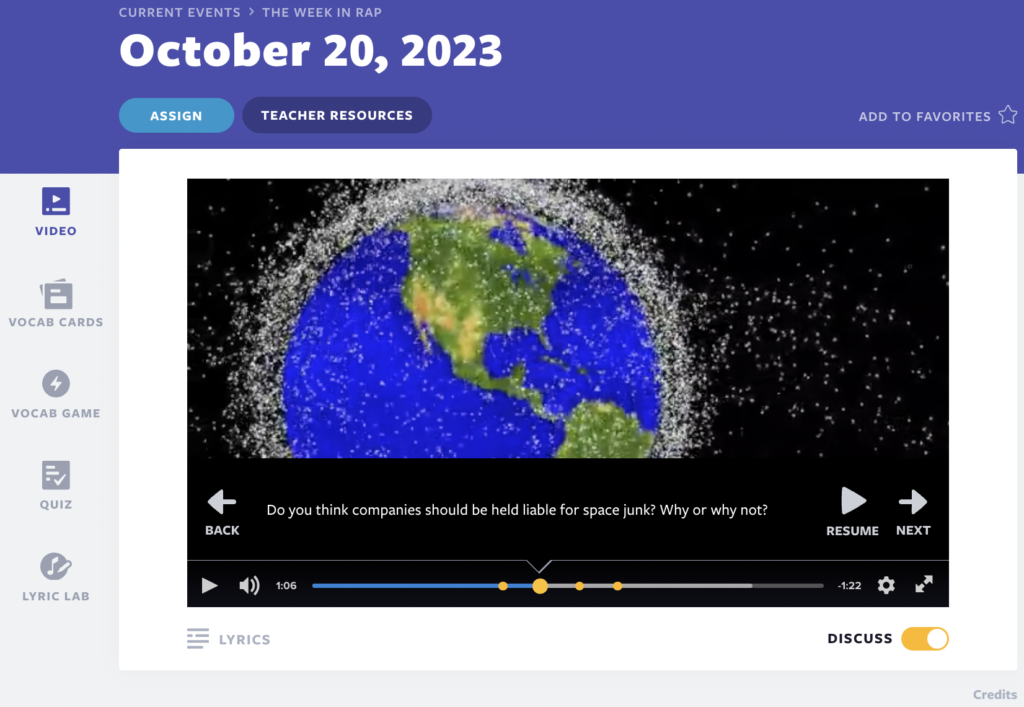
Flocabulary offers a way to highlight current events every week through The Week in Rap and the Week in Rap Junior. These weekly video lessons bring timely conversations into the classroom about local and global events, exposing students to issues that they may or may not be familiar with. Turn on Discuss Mode to have the video pause at meaningful moments with discussion prompts that you and your students can explore together.
4. Promote a sense of agency
Part of building a student’s self-confidence is promoting a sense of agency. You can inspire your students to take a more active role in their community and embolden them to be agents of change through civic engagement. Encouraging student agency honors students’ voices and identities, which empowers them to form their own opinions and perspectives. This approach values each student’s unique strengths and capabilities, promoting equity in the classroom.
With the upcoming elections, now is a great time to share Flocabulary’s civic videos on our electoral process and how our government works. Through videos on The Presidential Election, Voting, and our Political Parties, students can explore the relevance of civics in their everyday lives. These videos can help expand their vocabulary, leading to greater comprehension and mastery. Students then can apply these newfound skills in the real world by seeking out opportunities for activism in their communities.
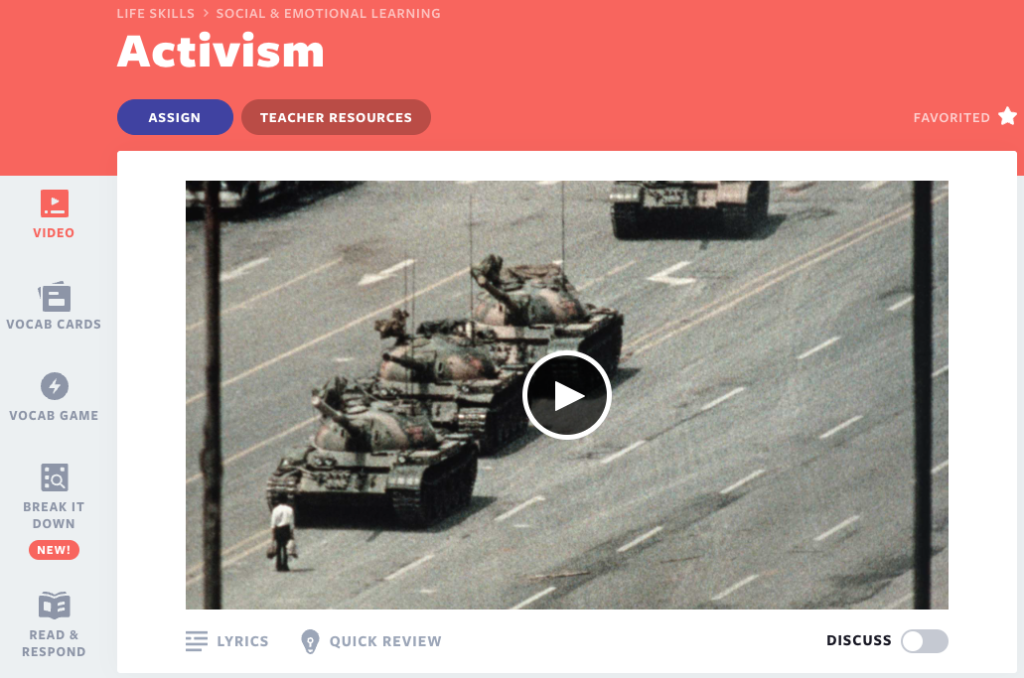
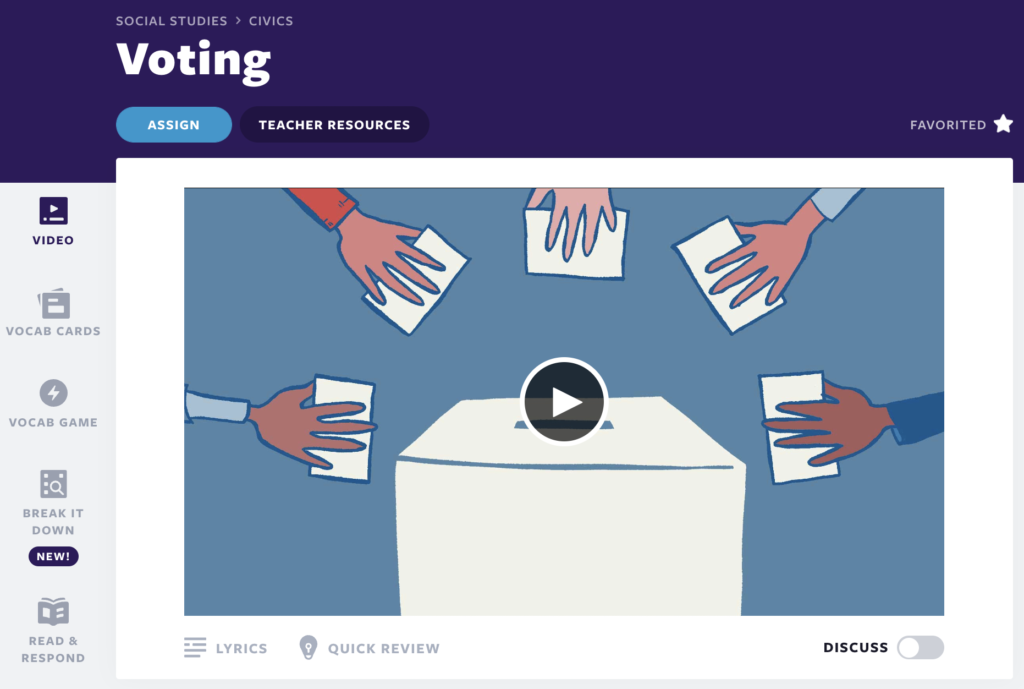
5. Highlight your students’ voices
Fostering a student’s social and emotional wellness includes giving them opportunities for self-expression. Student voice allows for expression, reflection, and learning ownership. Acknowledging and valuing students’ diverse perspectives and experiences creates an inclusive learning environment where all students feel affirmed and empowered. Provide them with a platform through which they can form their beliefs, shape their values, and share their diverse perspectives.
Use Flocabulary’s Lyric Lab to shine a light on student creativity and voice. Lyric Lab gives them a channel to express themselves more creatively and artistically, all while underscoring budding vocabulary development. In a lesson, assign students the Lyric Lab activity so they can create their own rhymes using the vocabulary words, rhyme generator, and built-in beats.
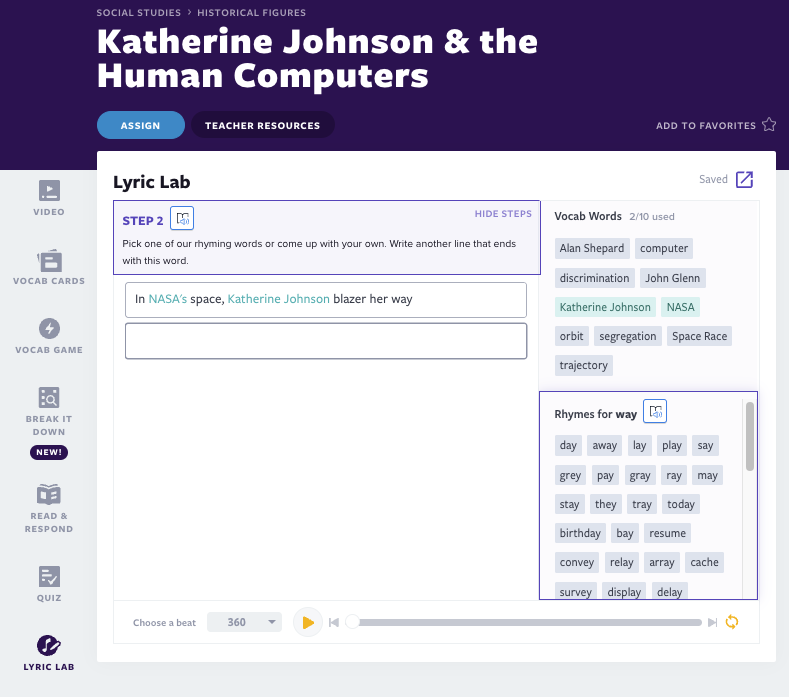
6. Have open conversations, even when they’re challenging
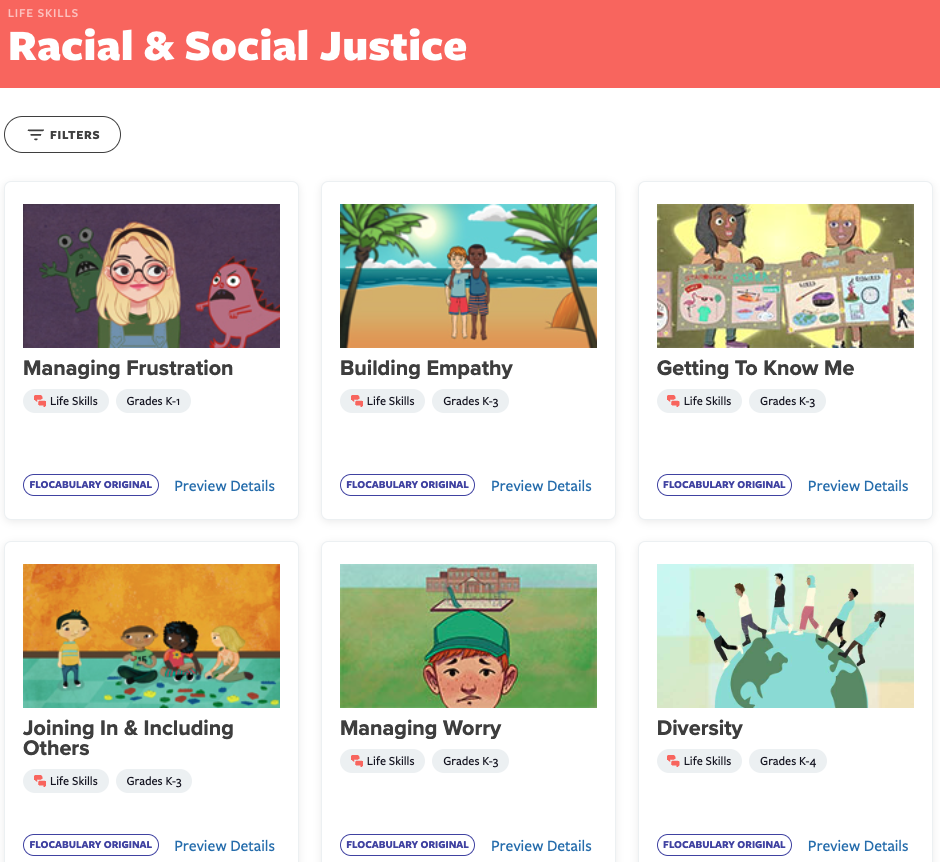
To nurture open and candid communication in your classroom, foster critical conversations around equity, including the exploration of counter-stories and the validation of multiple perspectives. While such conversations can be challenging to facilitate, the meaningful dialogue will help develop a foundation of trust between you and your students, and between the students themselves. Provide your students with opportunities to share personal stories, lending insight to their diverse backgrounds. Such awareness can lead to a better understanding of one’s self and others.
Explore the lessons featured on the Racial & Social Justice topic page and gain assistance from the Resource Guide. Toggle on Discuss Mode below the video to generate prompts and questions throughout the video and spark discussion. This is just one of the many ways you can apply these video lessons to the culturally responsive pedagogy framework.
7. Support students’ social and emotional well-being
As you try to hook your students into worthwhile academic pursuits, remind yourself that the classroom is a safe space for them to continue growing socially and emotionally. From the first day of kindergarten on, students are learning 21st-century skills like the 4Cs (communication, collaboration, creativity, and critical thinking) that will support their successes personally and professionally far beyond their school days. Culturally responsive instruction practices include social and emotional learning (SEL).
Explore a host of lessons and videos around SEL to support students’ life skills:
- Getting to Know Me – Build community by learning about and recognizing each other’s strengths and students’ interests.
- Building Empathy – Walk in another’s shoes to see things from their perspective and understand their feelings.
- Active Listening – Learn the art of listening (and not just hearing!).
- Goal Setting – Use the SMART acronym to set strong short- and long-term goals.
- Time Management – Gain some tips on the pragmatics of scheduling the day, from planning to exercising control to a sense of finding balance.
- Self-Compassion – Accept and love yourself, and in doing so, reduce stress, anxiety, and depression.
Watch the Building Empathy video on YouTube!
8. Strengthen your home-to-school connection
Parents and caregivers need to be partners in their kids’ school careers. By employing culturally responsive teaching, you will help create and foster authentic channels of communication with students’ homes. Sometimes, families have different cultural norms when it comes to interacting with their child’s school. Invite parent and caregiver participation by highlighting the ways you are aware of and recognize the multiculturalism you value and bring into your teaching. Share resources that emphasize how you are helping your students make concrete connections to their backgrounds and frames of reference.
With student accounts, Flocabulary allows students to access videos outside of the school day. At home, students can explore the content independently, reinforce concepts and skills with repeat viewing, and even invite family members for some co-viewing experiences. Assign students videos they can use to watch and practice vocabulary at home. Parents can rest assured that Flocabulary is a highly rated resource, given 4 stars for learning by Common Sense Education.
9. Celebrate moments in time
Challenge your students to research and represent significant contributors or poignant events in history by taking part in Flocabulary’s annual Student Voice Contest. Consider participating in our next contest!
In these contests, Flocabulary invites students to research and create a rap about an unrecognized figure. The winning students will have their work transformed into a Flocabulary lesson and get a behind-the-scenes look into how our videos are created.
This project supports culturally responsive teaching by encouraging students to explore and honor the contributions of historically marginalized figures from Hispanic and Black communities. Through mediums like rap, students deepen their understanding of cultural heritage and diverse perspectives. These contests provide a platform for students to showcase their voices and celebrate cultural diversity in the curriculum.
Take a look at how past winners have found a channel for their self-expression by sharing their poetic animations with Flocabulary’s global audience. Watch these videos with your students to inspire them:
- Black History Month Contest 2018: John Lewis & Nonviolent Action
- Hispanic Heritage Month Contest 2020: Sor Juana Inés de la Cruz and José Hernández
- Black History Month Contest 2021: Emmett Till and Fannie Lou Hamer
- Hispanic Heritage Month Contest 2021: Luis Alvarez and Día de los Muertos/Day of the Dead
- Black History Month Contest 2022: August Wilson and Louis Armstrong
- Hispanic Heritage Month Contest 2022: Rigoberta Menchú Tum and The Mexican Revolution
- Black History Month Contest 2023: Sojourner Truth and Frederick Douglass
All of these videos can also be found on Flocabulary’s YouTube channel. Here’s an example of one of the videos:
10. Seek out professional growth
Each of us brings what is often referred to as an “invisible backpack” (Peggy McIntosh, 1989) into the classroom. This invisible backpack originally referred to white privilege. Over time, this meaning has shifted and now speaks to the known and unknown biases we might carry. By reflecting on and better understanding the factors that have influenced our perspectives, we can, in turn, better understand our students’ “backpacks,” which are often laden with weighty experiences—from trauma to privilege—and support their individual needs.
Here are some resources we recommend looking into:
- LinkedIn article: Invisible Backpacks: What Are You Carrying?
- Flocabulary’s guide: Racial Justice and Equity in Education Resource Guide
- Zaretta Hammond’s book: Culturally Responsive Teaching and The Brain
- Learning for Justice’s professional development: Identity Reflection Activity
Start implementing culturally responsive teaching
Challenge yourself to learn more about culturally relevant pedagogy and related teaching strategies. Share what you know and learn with others. Remember, as you work to build a culturally responsive classroom, you don’t have to be an expert in all cultures. In seeking out research and strategies around culturally responsive pedagogy, you will in turn be highlighting your students as the experts of their own cultures and personal identities.
Plus, you will continue to model lifelong learning by learning alongside your students. Such research-based practices can transform your teaching by ensuring that students are more participatory and more invested in their day-to-day learning. We can and should acknowledge that one size does not fit all by adopting such culturally responsive teaching strategies and resources. And the result will be that your classroom experiences are more relevant, meaningful, authentic, and engaging.
New to Flocabulary? Teachers can sign up for a trial to access our lesson videos and assessment activities. Administrators can get in touch with us to learn more about unlocking the full power of Flocabulary through Flocabulary Plus.
